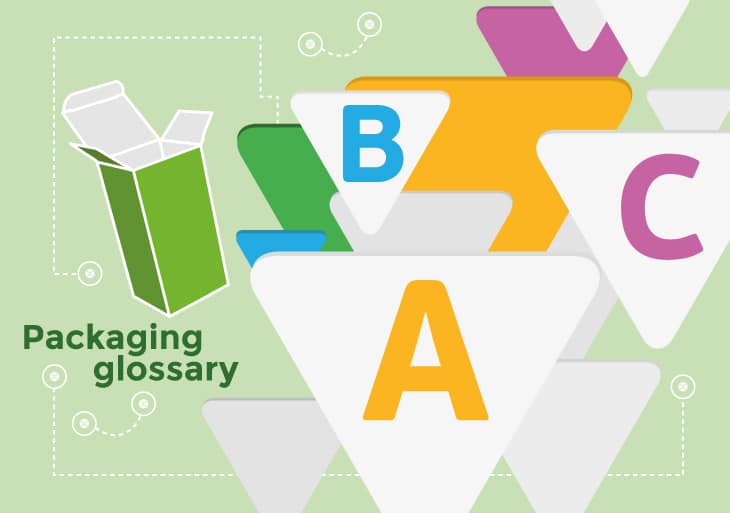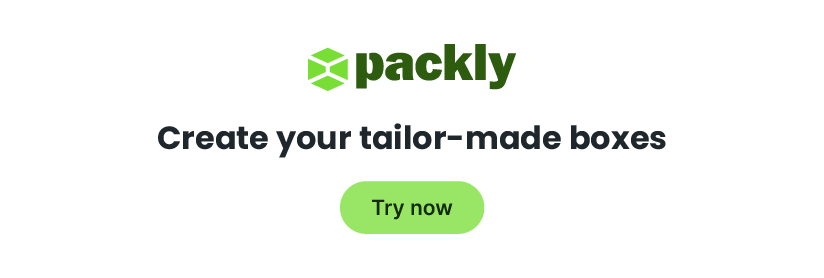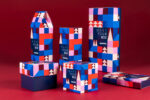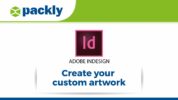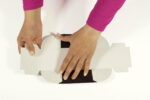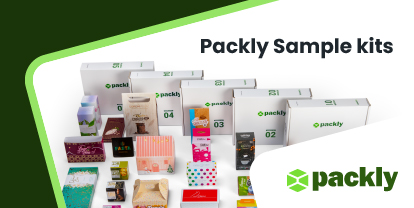Today’s article is a small glossary of the most recurrent terms in packaging: a useful reference for those of you who want to try their hand at designing custom boxes for the first time.
The glossary comprises basic knowledge that will help you manage the entire production process and to avoid common mistakes. Let’s speak the same language!
L
B
Back: the back of the sheet.
Bitmap (or raster): A digital image that uses a grid of picture elements (pixels). Every pixel uses several bits to determine its color. A 1-bit bitmap only contains black-and-white pixels, a 24-bit bitmap is a picture that can contain up to 16 million different colors. The number of pixels contained within it determines its resolution. This type of file is ideal for the representation of real images with vibrant colors, but it’s not recommended for graphical works that require dimensional changes: zooming in and enlargements could cause a considerable loss of resolution and quality of the various elements.
Buttonhole: semicircular notch made on one side of the box to facilitate the opening.
C
Coated paper: paper coated with a layer that makes the surface smooth and more suitable for printing images and illustrations. The finish can be glossy, matte or semi-matte.
- Glossy: type of surface finish that makes the paper smooth and reflective. It’s ideal for printing images as it promotes an optimal and brilliant color rendering.
- Matte (matte): finish that does not reflect light and guarantees excellent readability.
- Semi-matte: paper with a light reflection index halfway between glossy and matte. Characterized by good readability and good color rendering of the images.
Corrugated fiberboard: thick and particularly heavy paper-based material, comprising a central corrugated paper sheet (wave) enclosed between two flat sheets (covers).
CMYK: also known as the process color printing, is a printing process that uses 4 colors of ink: cyan (cyan), magenta (magenta), yellow (yellow) and black (key color).
Creasing rule: a non-cutting plate inserted in the cutting die used to make an indentation or a mark to provide a point of bending or flexure.
Creasing: a mark made at the fold lines to make folding of the sheet easy and accurate.
Crease: fold line of the box.
Crash lock bottom: an interlocking closing system with a self-assembling bottom.
Cutting line: the cut edge of the box.
D
Definition: the degree of detail of an image. Measured in ‘high’ and ‘low’.
Double-wall: a particular tray box characterized by an additional internal wall spaced from the external ones.
Die: a tool, usually of hard metal or plywood with inserted cutting and creasing rules and knives, for cutting, creasing or stamping out parts or blanks in paperboard.
Depth (B): the distance between the front and the back of the box.
Die-line template: cutting and folding flat layout of a box made up of cutting lines, outside bleed, and creasing.
E
Euro hang hole (sombrero hole): a hole compatible with all display racks and stands that comply with the European standards.
F
Front: the front of the sheet, printed first.
Finish: manufacturing process performed after printing to get a particular visual and/or tactile effect.
G
Glue flap: closing or joining member of a box, carton or envelope used to glue the packaging partially or completely. It’s left unprinted as it is reserved for glue.
Grain direction: The direction parallel to the grain in a paper or board. When paper pulp is fed through a paper machine, the fibers settle in a direction parallel to the motion of the machine. This grain direction, also known as machine direction, of paper and paperboard, is an important strength consideration in container design. There is greater tearing strength across the grain (in the cross direction) than with it; whereas there is greater tensile strength in the grain direction.
Grammage: the weight of a sheet of paper expressed in grams per square meter. For the same type of paper, the weight is directly proportional to the thickness.
H
Height (H): shows the distance between the base of the box and the upper closing part.
Hook: safety closure with an interlocking tongue.
Halftone: the reprographic technique that simulates continuous-tone imagery through the use of dots, varying either in size or in spacing, thus generating a gradient-like effect.
I
Insert: a sheet of material placed within a package to add support, or to separate individual items.
Insert grid: internal partitioning of a box with multiple compartments.
L
Levels: graphic software worksheets that are superimposed on each other. Their use is recommended to better organize and manage the different graphic components of a file and their overlap.
M
Multiple graphics (multi-reference): graphic variants for a single type of product.
Mixed yield (or multiple): see Multiple graphics.
N
Neutral packaging: packaging that has not been printed.
O
Outside bleed: extension of printed areas beyond the edges of the surface being printed, to allow for substrate dimensional changes and variations in the printing machine accuracy. Stated in green and 3mm beyond the cutting line.
Overprint: the process of printing one color on top of another.
P
Paper: hygroscopic sheet material got by processing cellulose fibers joined and dried. Its grammage goes from 10 to 150 g/m2 with a thickness of 0.03 ~ 0.3 mm.
Paperboard: a material comprising a fluted corrugated sheet and one or two flat linerboards. It is made on “flute lamination machines” or “corrugators” and is used in the manufacture of shipping containers and corrugated boxes.
Paper format: shows the size (length by height) of the sheet. The main standard format of reference is the international standard (A4 and its siblings). The paper industry standard is B1 (approx. 70 × 100 cm).
Pantone: type of spot color.
Perforation: Line of tiny holes that are punched into the paper to make the various parts of the paper separate from one another by folding and “tearing along the dotted line.”
Prototype: the first model of the final product used for functional and graphic testing.
Process color: see CMYK.
R
Resolution: is a measure of spatial printing, video or image scanner dot density expressed in dpi. Determines the sharpness of an image.
RGB: it is an additive synthesis color model based on three primary colors: red, green and blue which are mixed to get all the other colors of the chromatic spectrum. Mostly used for images and designs intended for devices that emit light.
S
Spot color: is any color generated by an ink (pure or mixed) that is printed using a single run.
V
Vector file: vector files are composed of geometric primitives whose combinations give life to points, lines, and shapes of any kind. These primitives are generated from mathematical equations and therefore can be resized and modified without loss of information or quality.
W
Windowing: cutting die openings, usually covered by a transparent film, to permit partial visibility of the contents.
Width (A): defines the opening side of the box.
Whiteness: An optical property of paper that describes the degree to which a paper diffusely reflects light of all wavelengths (i.e., colors) of the visible spectrum.
Y
Yield: the number of boxes that can be made in a single print format.
#
1-2-3 bottom: an interlocking closing system made of suitably shaped flaps which, once closed, stay locked.
3D Mockup: an interactive digital file that shows a three-dimensional preview of the product.
Design and print your custom packaging in minutes with Packly!
